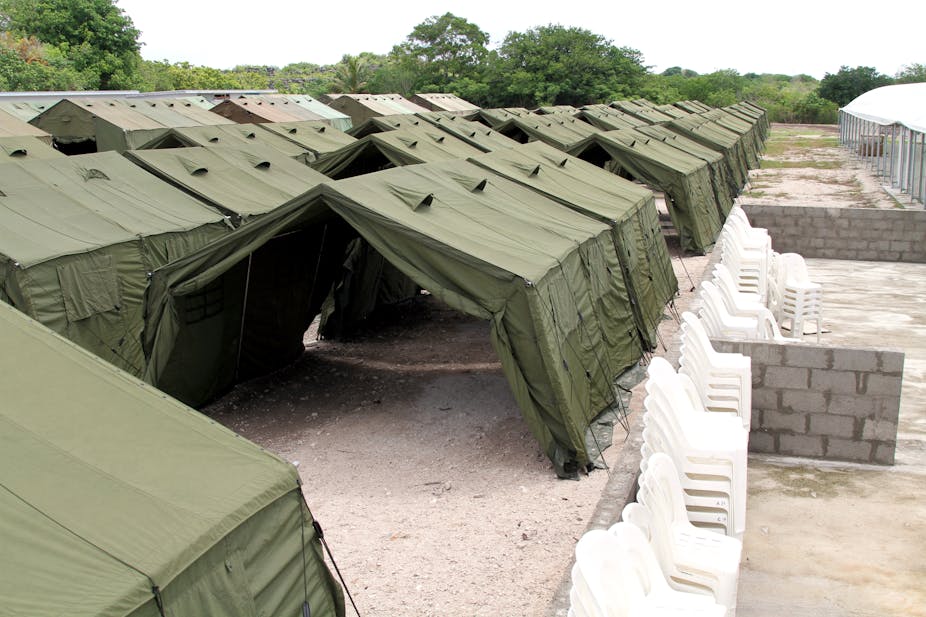The Houston Expert Panel on Asylum Seekers was set the task of reducing deaths of asylum seekers following the mounting loss of life on the seas between Indonesia and Australia. But it remained blind to the deaths of asylum seekers in Australian custody.
Australia is yet to ratify the Optional Protocol to the Convention against Torture and other Cruel, Inhuman and Degrading Treatment or Punishment that is concerned with the oversight and monitoring of detention facilities.
The protocol seeks to prevent ill treatment and promote humane conditions of detention by requiring that all places of detention are subject to independent monitoring and inspection. This includes immigration detention. All available evidence shows that such scrutiny can prevent ill treatment and death.
Australia has been dragging its feet on ratification since signing the protocol more than three years ago. But this is not the only place where Australia has neglected the kinds of accountability and prevention mechanisms that value human life, notably the lives of incarcerated asylum seekers to whom governments owe a particular duty of care.
The Australian Institute of Criminology operates the National Deaths In Custody Program, which has never counted deaths in immigration centres. This has never been a sensible arrangement, but is now a glaring and untenable omission.
Deaths in custody have happened before, and it’s reasonable to expect they’ll happen again. Just this weekend, three men detained at the immigration facility in Nauru engaged in self-harm. We have seen this before, and we know where it leads.
According to accepted definitions, those on board an asylum seeker boat are considered to be in the custody of the navy or customs from the point of interception until they are transferred to Christmas Island or some other point of disembarkation. They are clearly in custody while in detention on Christmas Island or other mainland detention facility. They remain in custody during air transfer to Nauru or Papua New Guinea and of course are in detention (closed, open or otherwise) under the direction, funding and operation of Australia while on these islands.
All the offshore processing arrangements are now falling into place because of the brief Houston was given – to prevent further loss of life. Yet none of these arrangements would bring a death occurring during interception, transfer or detention into the data collected by the Australian Insitute of Criminology because for years it has been determined that asylum seekers in these kinds of circumstances are not in custody.
Based on our research we have requested that the National Deaths In Custody Program include:
Deaths within immigration detention centres operated under Australian legal authority (whether located onshore or offshore).
Deaths while under escort during deportation, or while designated authorities (such as police or immigration department compliance field officers) are attempting to take individuals into custody under the Migration Act.
Deaths that occur during operations in Australian territorial waters once individuals or vessels have come under the surveillance or control of Australian border authorities.
All of these circumstances, we believe, generate a duty of care that falls on Australian law enforcement and border officials.
There are historical examples from the database of border-related deaths we host on our Border Crossing Observatory that fit this criteria.
Newborn baby “Ashmorey” died in September 2001 on board an Operation Relex vessel. Deportee Viliami Tanginoa jumped from a basketball pole in Maribyrnong Detention Centre in 2001 after an altercation with guards. Seong Ho Kang was struck by a taxi in Sydney in 2004 while seeking to evade arrest by immigration authorities. All these deaths were deaths in custody.
It is important to note that applying the “deaths in custody” label for the purposes of investigation and monitoring does not mean responsibility is attributed for those deaths. This is a matter to be determined by coroners. But official designation as a “death in custody” would mean the deaths that occur in detention be brought before a Coroner’s Court.
Any and all deaths that occur in any of the circumstances described above must be considered to be deaths in custody and should be included in the Australian Institute of Criminology monitoring program. Australia must urgently ratify and implement the optional protocol. This why the Border Crossing Observatory is launching a campaign to have these deaths counted.
If we are serious about preventing the deaths of asylum seekers these measures must be included in the arrangements that are now being pieced together as we return to offshore processing.

